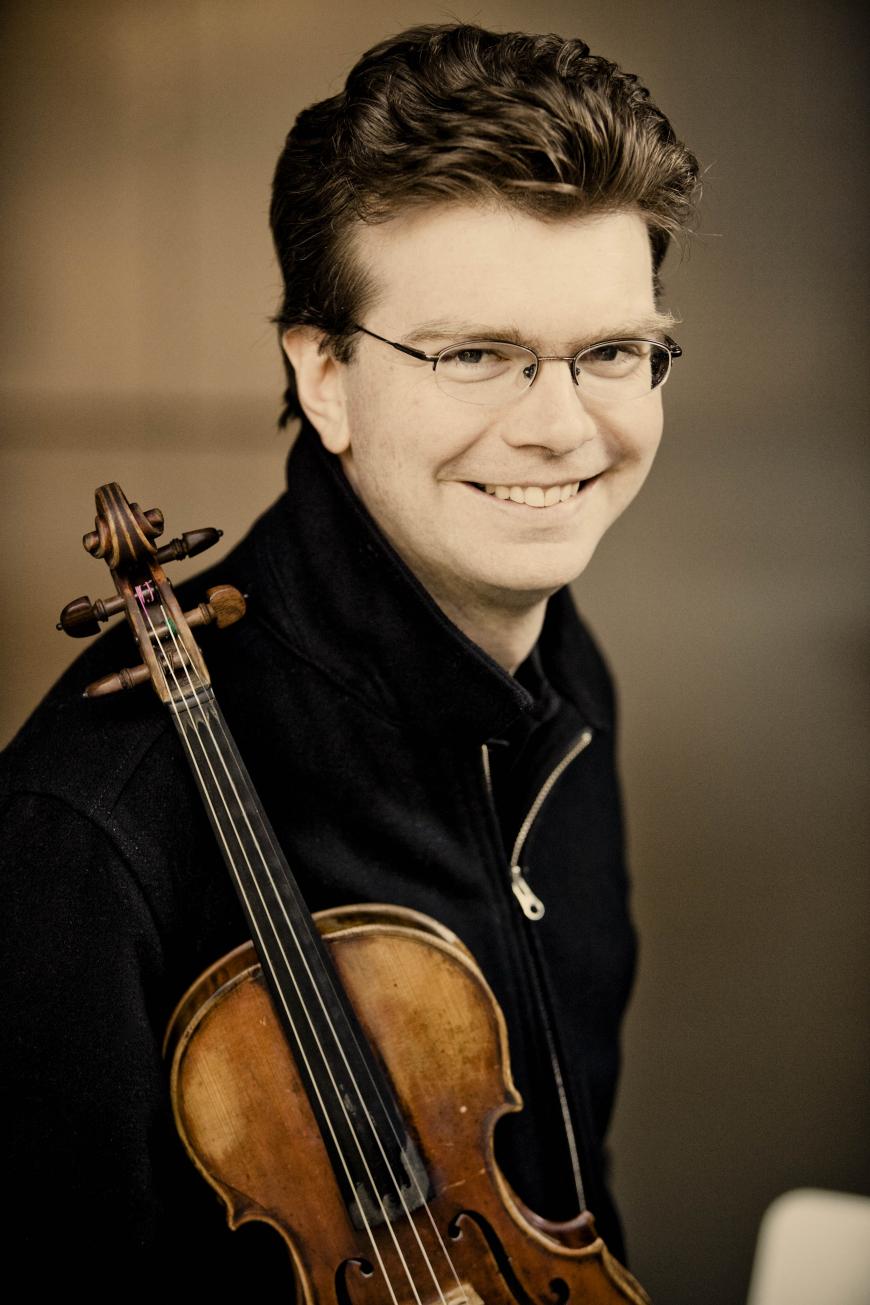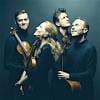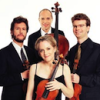
The death a year ago of Geoff Nuttall, first violinist of the St. Lawrence String Quartet, was a tragedy for all who knew this colorful man and his magnificent work. It also presented a dilemma to the surviving members of the resident ensemble at Stanford University. Nuttall was so talented, distinctive, energetic, and commanding that even among skilled colleagues he dominated the Quartet. Who could replace him? It would not be the same group.
And so, violinist Owen Dalby, violist Lesley Robertson, and cellist Christopher Costanza have, at least for now, chosen to follow the path of some other ensembles faced with tragedy or loss. They have reinvented the St. Lawrence as a chamber collective, inviting guests to perform works in various combinations.
The group’s concert on Sunday, Oct. 22, at the Bing Concert Hall Studio — the first concert the St. Lawrence has held in this small cubical space — was a healing experience. The guests were former St. Lawrence violinist Scott St. John —who left 10 years ago to move back to Canada, from where the Quartet originally hails — and his wife, violist Sharon Wei.

The five of them performed Antonín Dvořák’s String Quintet in E-flat Major, Op. 97, as if they’d been playing together all along. It was a lively rendition, full of frisky rhythmic energy, played with a light, shiny tone. Though the piece begins with a solo for second viola, played here by Robertson, the performance was dominated by St. John at first violin and Wei at first viola.
The quintet is one of Dvořák’s “American” works, along with the “American” String Quartet and the “New World” Symphony. While teaching in the U.S., the Czech composer wished to demonstrate to his students how to incorporate the sounds of Black and Native American folk music into a European stylistic base. Pentatonic melodies and repeating rhythmic patterns, particularly in the quintet’s scherzo, convey a bit of this, but the total effect is unmistakably Dvořák.
The composer who would most effectively take Dvořák up on his challenge was a generation younger than those students. Florence Price’s Quartet No. 2 in A Minor is her biggest work in this genre. Price, a Black woman who wrote this piece in the 1930s while living in Chicago, is rapidly being rediscovered as a great American composer. The players observed that this may have been the work’s first-ever performance at Stanford.
Here, St. John joined the St. Lawrence players as second violin. That meant he handled most of the ghostly ostinatos that feature strongly throughout the composition. Price’s writing, like Dvořák’s, has a European foundation, but she incorporates elements of Black spiritual melodies and blues harmonies. These are subtly displayed, and how much they are emphasized depends on the performers. In this version, such features were at best attenuated. It was a European-flavored performance, still excellently played. The Juba dance that forms the scherzo movement did successfully convey the composer’s intended rhythmic snap. The resemblance to Dvořák’s scherzo was striking.
Dalby and Costanza completed the concert with the Duo No. 1 for Violin and Cello by Bohuslav Martinů, a Czech composer of Price’s generation. This piece comes from Martinů’s early, aggressively modernist period. The score encourages the instruments to work at cross-purposes and, especially in a long cello cadenza, to act slightly crazed. These performers refused to do that. They played gently and found ways to emphasize the formal exchange between the parts instead of the conflict. In the cadenza, Costanza was quietly careful and introspective.
This was a quiet and unpretentious concert, but the quality and care of the music-making — and the St. Lawrence players’ ability to carry on in Nuttall’s absence — resulted in a warm and welcome program.




